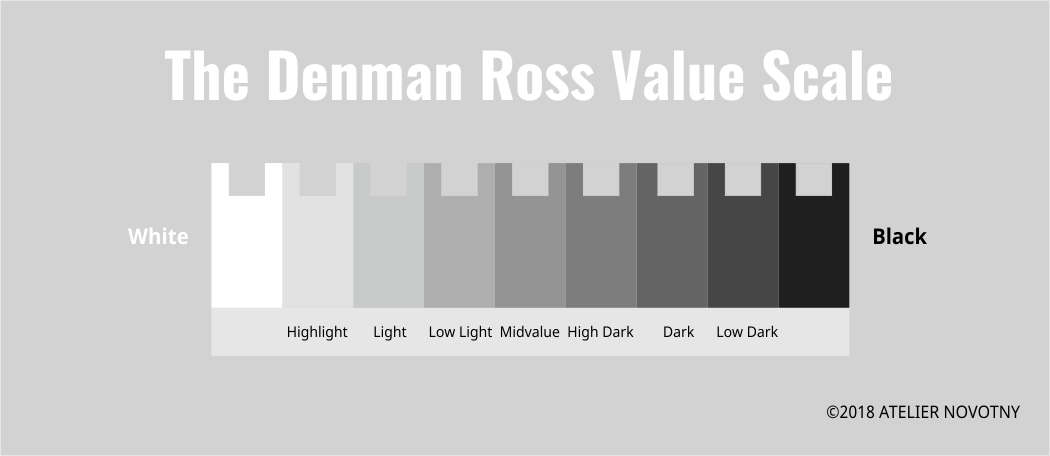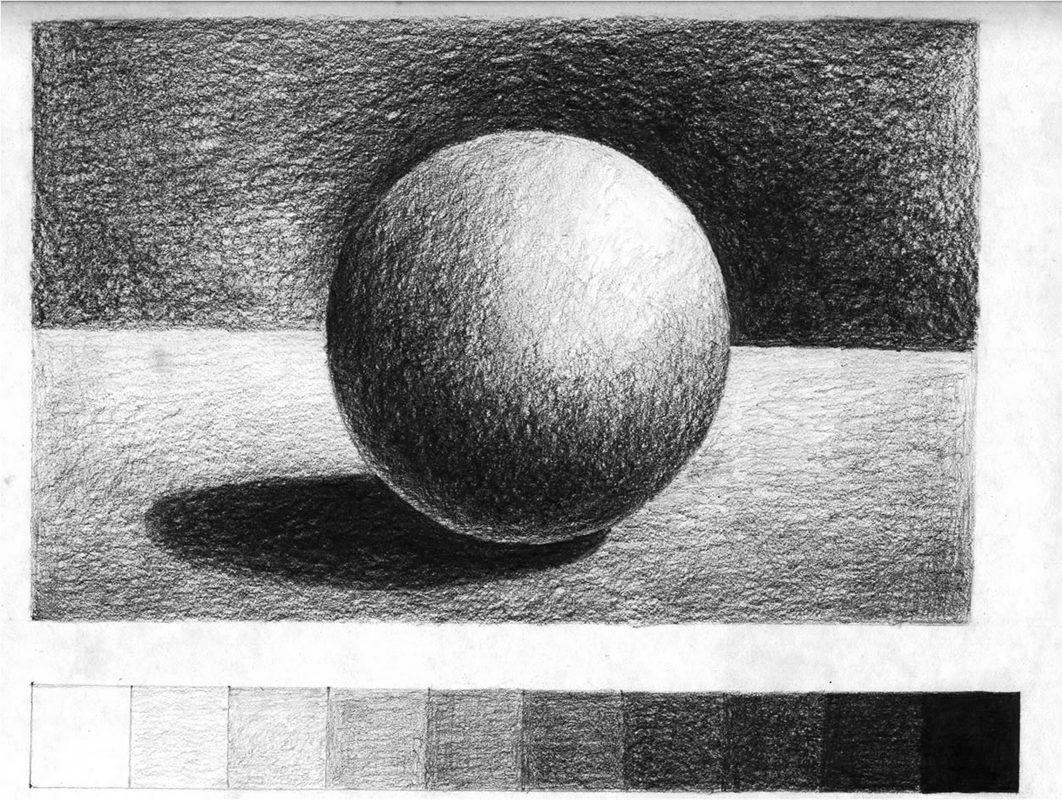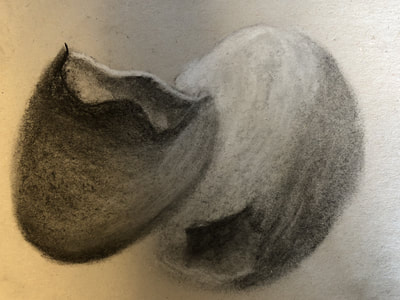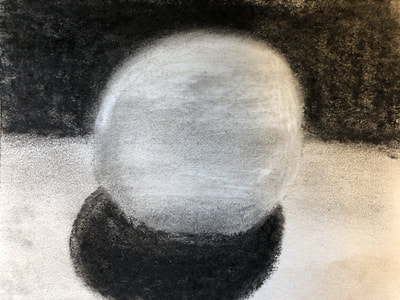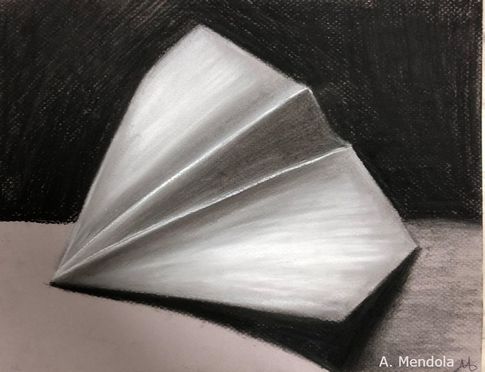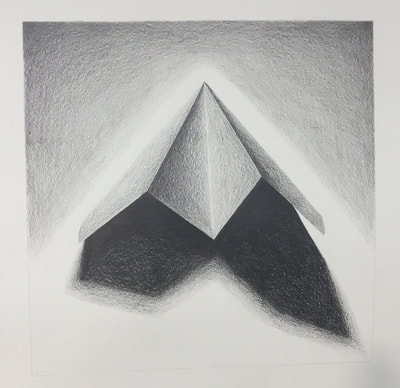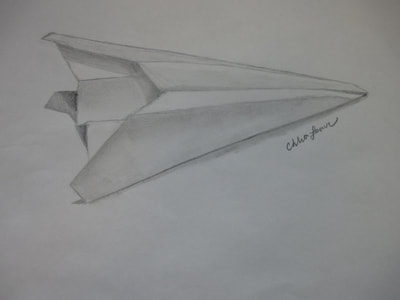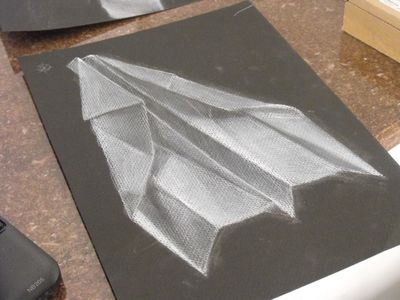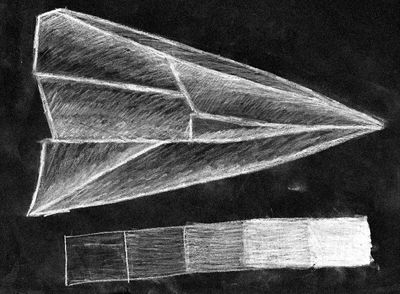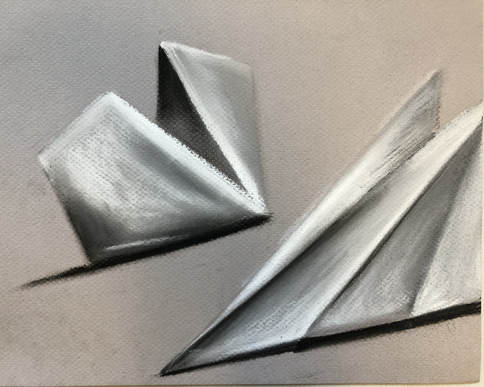Value:
Value is one of the most important elements of art. It pertains to the lightness or darkness of colors.
Value deals directly to light. Light reflects off of objects and goes into our eyes, allowing our mind to process the light and what it is we are seeing, hence why value is so important.
When an artwork has a full range of values; darks, middle tones, and lights, the art will be more aesthetically pleasing to the eye.
Value Scales are tools used to identify the specific tones. It is usually a long rectangle divided into three or more segments. The segments show a transition of a color going from the lightest tone on one end, to the middle tone, to the darkest tone on the opposite end.
Value also allows for the viewer to see where the light is hitting an object, called the highlights and the opposite, where the light does not hit an object, called shadows.
This allows the artwork to become more realistic and more recognizable to the viewer.
Value deals directly to light. Light reflects off of objects and goes into our eyes, allowing our mind to process the light and what it is we are seeing, hence why value is so important.
When an artwork has a full range of values; darks, middle tones, and lights, the art will be more aesthetically pleasing to the eye.
Value Scales are tools used to identify the specific tones. It is usually a long rectangle divided into three or more segments. The segments show a transition of a color going from the lightest tone on one end, to the middle tone, to the darkest tone on the opposite end.
Value also allows for the viewer to see where the light is hitting an object, called the highlights and the opposite, where the light does not hit an object, called shadows.
This allows the artwork to become more realistic and more recognizable to the viewer.
Sketchbook Assignment Part 1:
On a clean page in your sketchbook, title the top of the page VALUE
Then create 9 1" X 1" squares that are aligned horizontally.
Label them #'s 1-9
Square #1 will be white and square # 9 will be the darkest you can get the pencil...it will hurt pushing down hard
The squares in between 1 and 9 should gradually fade from one color to the next (Look at the image below)
Then create 9 1" X 1" squares that are aligned horizontally.
Label them #'s 1-9
Square #1 will be white and square # 9 will be the darkest you can get the pencil...it will hurt pushing down hard
The squares in between 1 and 9 should gradually fade from one color to the next (Look at the image below)
Once your scale is completed, you will either trace a circular object or use a compass to draw a perfect circle
You will pretend there is a light shining on the circle from the right side and color in the circle showing value,
the darkest area of the circle should be on the opposite side of the highlight or where the light source is shining.
Underneath the circle, you will draw in its shadow; an oblong circle.
Watch the video below to see how it is created and look at the image above for examples
You will pretend there is a light shining on the circle from the right side and color in the circle showing value,
the darkest area of the circle should be on the opposite side of the highlight or where the light source is shining.
Underneath the circle, you will draw in its shadow; an oblong circle.
Watch the video below to see how it is created and look at the image above for examples
|
|
Do Now:Watch the video to the left called Elements of Art: VALUE
Answer the following questions in your sketchbook after you have watched the video. Please be sure to have today's date and the title VALUE at the top of the page. This is a Do Now grade worth 25 points
|
Your Mission:
|
For this project, you will apply the drawing skills learned from the previously lessons and use them to sketch a paper airplane from observation using charcoal. It is your mission to draw the paper airplane using a full range value scale, allowing the viewer to see where the folds of the plane are, the highlights (where the light is hitting the paper), and the shadows (where the light is not hitting the paper)
A value scale should be (neatly) included on one side of your drawing, with the appropriate amount of tones used to create your masterpiece. Be sure to:
Rubric:
| |||||||
Proudly powered by Weebly

